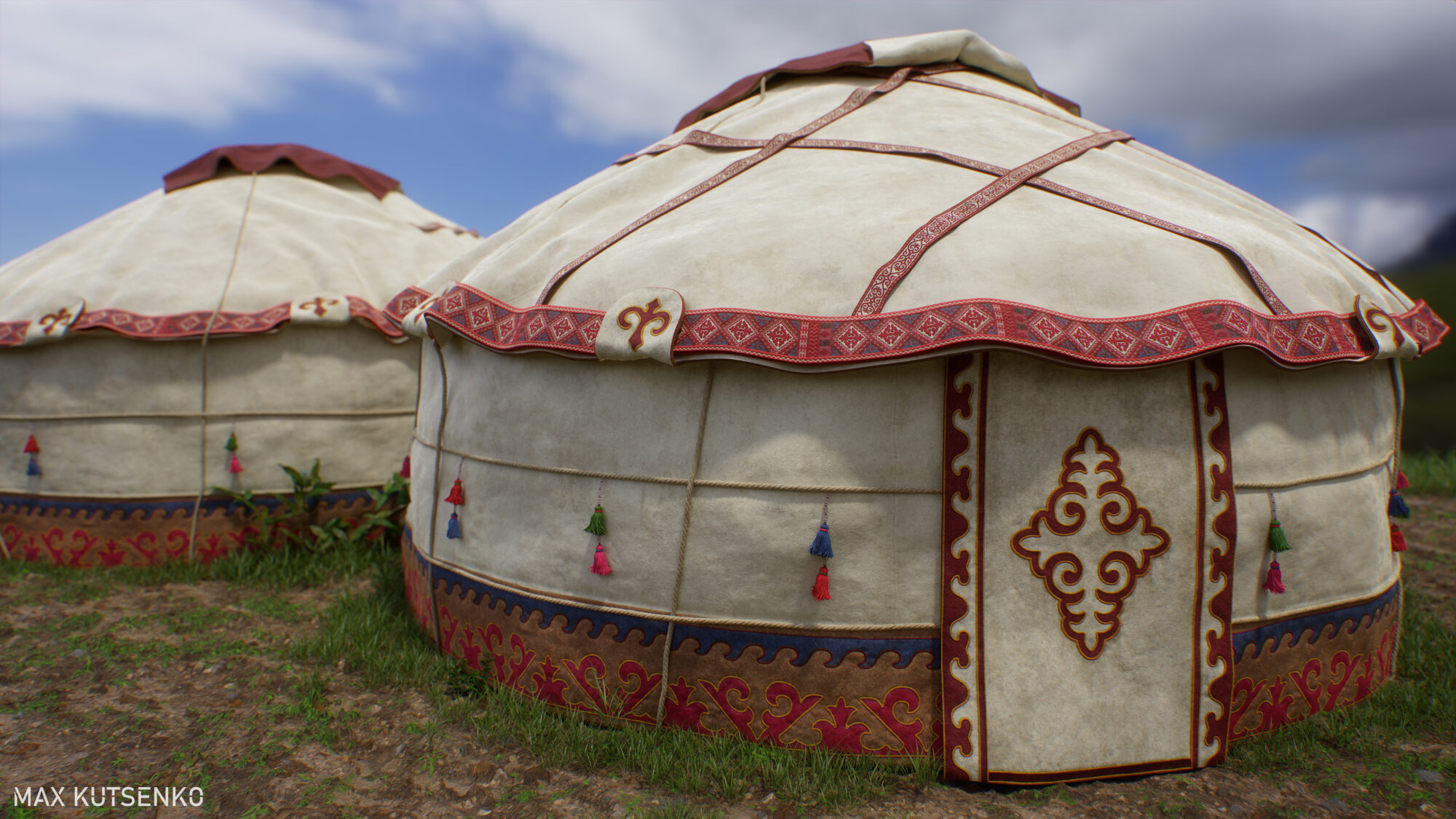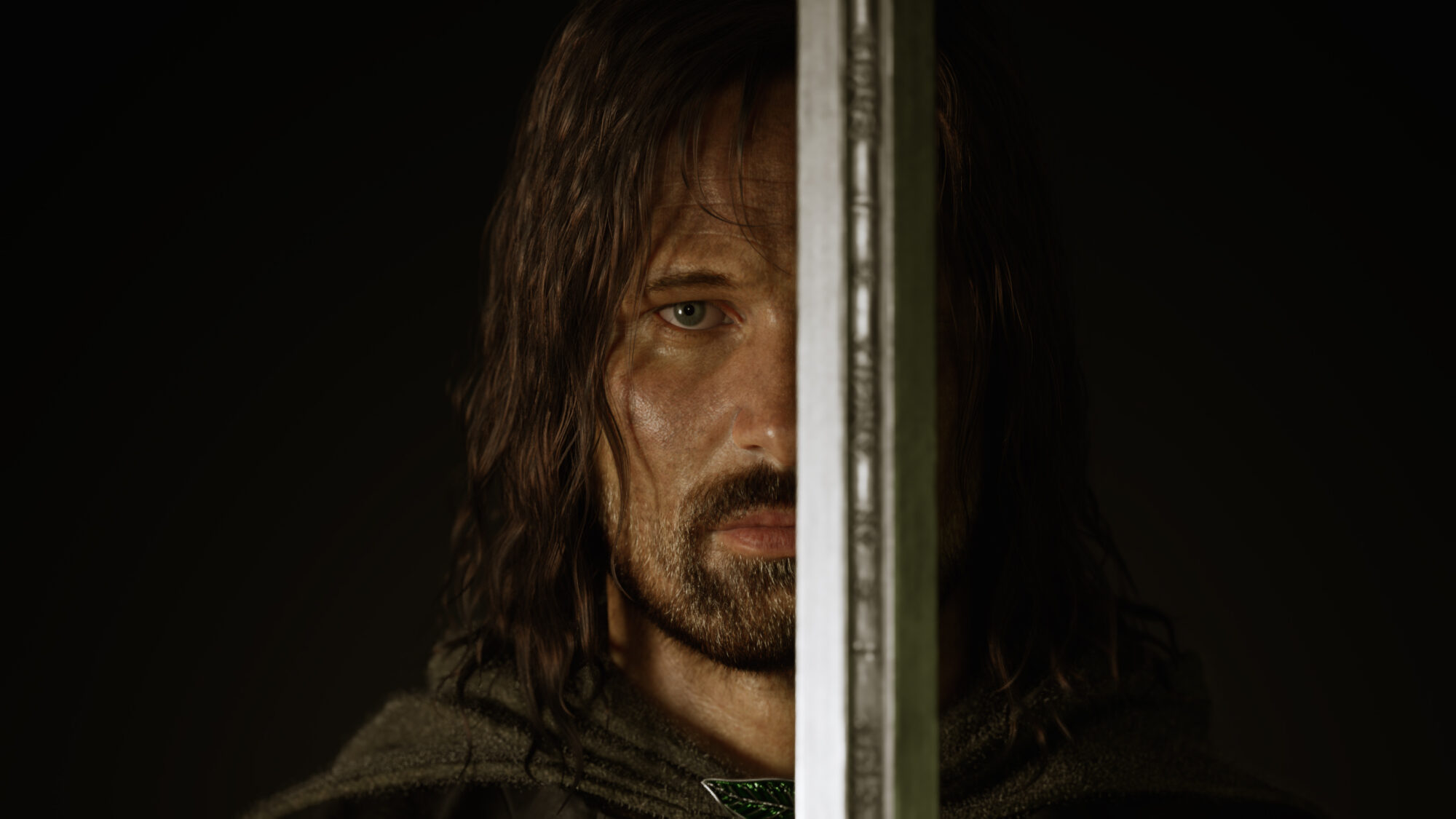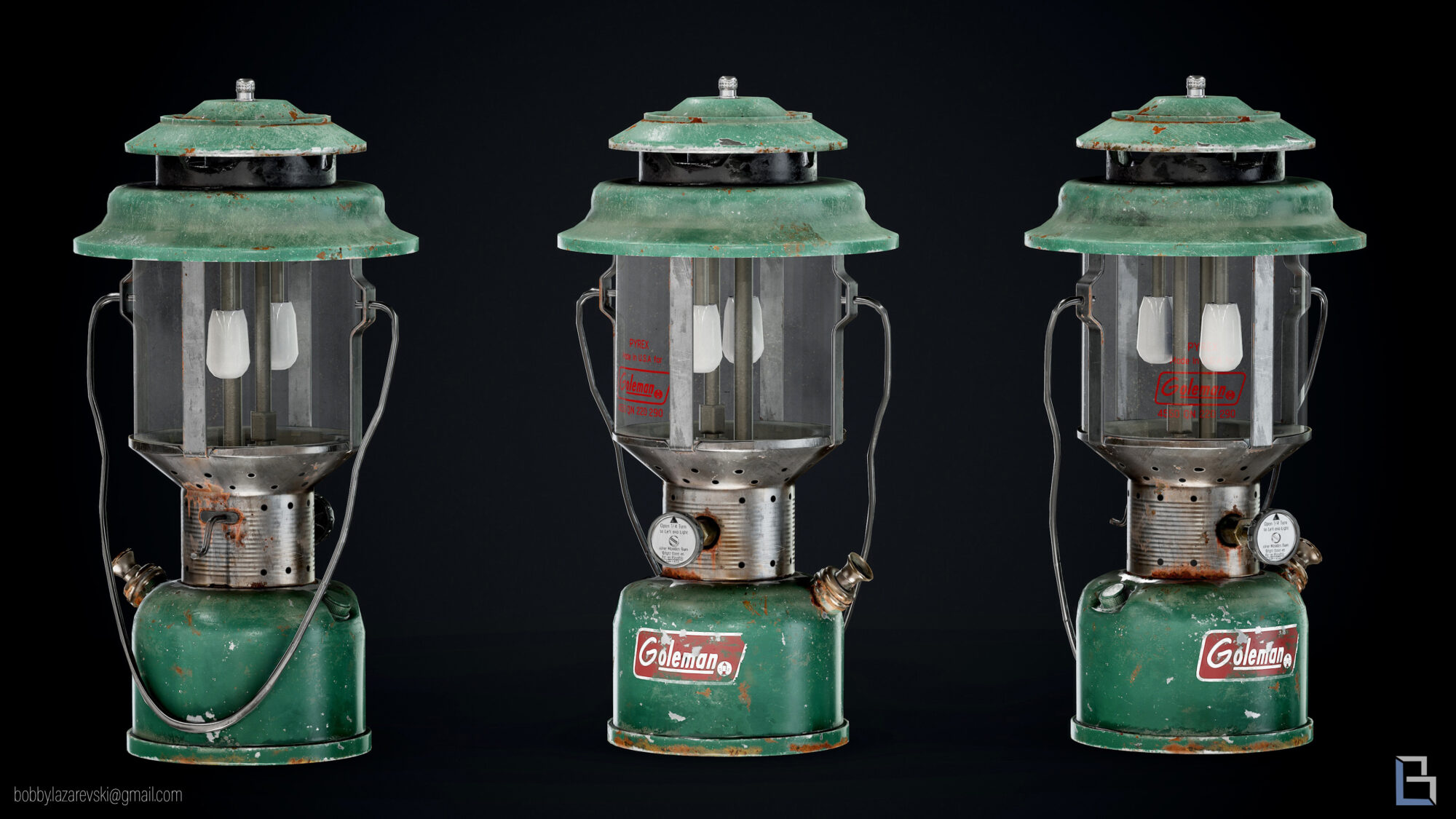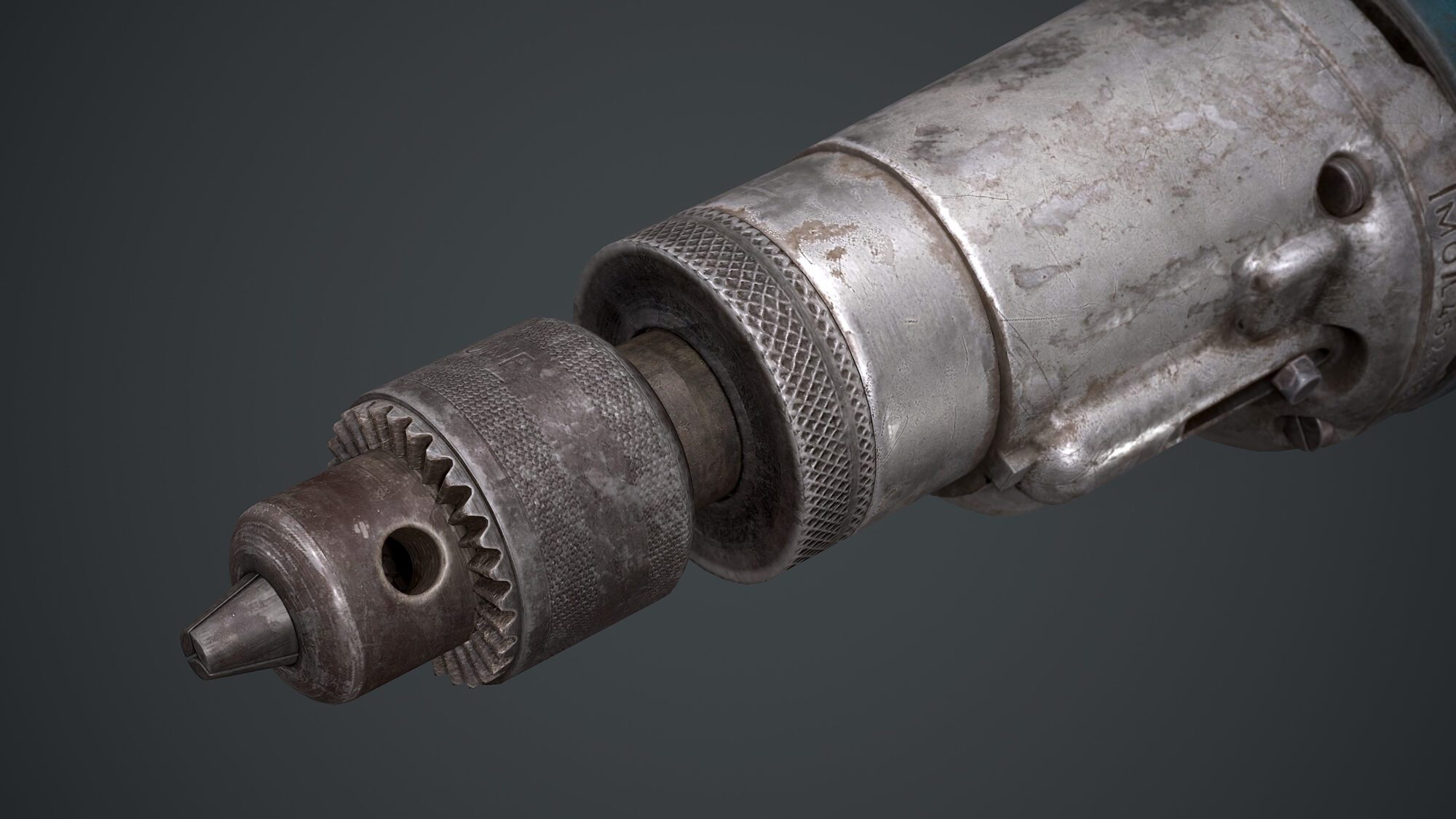Jungle Research Compound


Introduction
Greetings fellow artists and digital art enthusiasts!
My name is Finn Meinert Matthiesen and I'm a 3D Environment Artist from Germany. I have been working in the games industry for almost eleven years, currently employed as Senior 3D Concept Artist at Karakter Design Studio [www.karakter.de] in Berlin, responsible for the real-time and offline rendering environment concept art development of an unannounced project.
Over here at Karakter Design Studio, we've established a real-time concept production pipeline to help our clients with 3d in-game and in-engine art solutions. The studio is relatively popular regarding the art direction of the "Game of Thrones" TV series (Karakter Design won several Emmy Awards in this area) or the AAA game "Horizon - Zero Dawn", respectively contributed concept art and art consulting for various AAA games and game series such as "Call of Duty", "Middle-earth: Shadow of Mordor", "Killzone" and "Anno".
Before I joined Karakter Design, I had been Principal Environment Artist at Crytek, working on various AAA and AA titles like "Ryse - Son of Rome", "Warface", "Robinson - The Journey", "Crysis 2" or "The Climb". I started there as a young 3D Artist in my mid-20s, just after my graduation in traditional communications and graphics design.
Motivation & Motives
So in this article, I’d like to explain my workflow, motivation and motives considering my recent “Jungle Research Lab Compound” study in Unreal Engine 4, which I posted on Artstation some time ago.
It is the fifth nature study I did in the past months and my working philosophy for this approach was quite similar to the former ones, which I’ll explain in-depth later in the article.
My main motivation for these studies stays the same as it did before, even though I have to admit that I’ll slowly change over to a more handcrafted workflow again.
This is also the reason why I put my focus more on the Sci-fi architecture aspect of the scene, using a lot of my personal assets, which had been created for former or other projects.
Still, my main motivation was to play around with ideas and solutions in a more flexible way instead of wasting too much time with elaborate 3d asset creation.
Apart from that, I was also inspired by the concept art workflow here at Karakter Design, which puts the focus more on shaping up the main idea instead of rendering it to perfection, which usually happens later on.
Full Artstation link with more images: https://www.artstation.com/artwork/WK2go2
Workflow Requirements & Target
For my former jungle study, I wanted to highlight the puristic element of a foliage-heavy environment, without any human or technical influence at all.
But since I was curious about how such an environment could be combined with futuristic elements, I started to bring in a few of my technical assets into the scene, respectively also explored a bit of the garden aspects as well. Pretty sure that I’ll stick with this kind of combination for further scenes.
Again, my working philosophy for this study was once more to keep the workload manageable and to focus on the overall mood and big picture rather than on detailed or overly complex assets in terms of creation, especially since time is usually the critical factor with family, friends and a full-time job.
As mentioned in other articles, I worked on so many 3d assets during my career in games that it wasn’t really important for me to practise my modelling skills, although the number of self-made assets is noticeably higher in this study due to the influence of the futuristic architecture part.
But in order to safe time, I again relied a lot on these own assets and materials that I created for earlier projects or that I had laying around, respectively I mixed those up with some ground assets from Megascans, a few bushes from the Epic stores and, last but not least, some heavily modified and optimized Evermotion high poly assets like in my former puristic jungle study.

Inspiration & Execution
As usual, I brought myself into the mood for the scene by gathering inspirational material and photo reference images of various tropical jungle locations and landscapes, even though I improvised a lot on the architecture part of the scene.
The background building and the futuristic component in the midground were more created on the fly, inspired by my Sci-fi kitbash set asset items that I had in my personal library.
The decision to go for another jungle-based environment was sort of intuitive. The overall scene started more as an art experiment map for further studies, but somehow evolved into a standalone environment somehow.
Since the jungle topic felt a bit samey compared to my former scene, I actually tried to spice it up with this architectural influence.
Apart from this, I also tried to vary the jungle topic with the use of some different terrain elements and techniques as well.
At a certain point, I also wanted to make it feel like a true game environment again, so even though the performance was not the highest priority, it shows this aspect with the Unreal Dude gifs.
And last but not least, I added the night lighting variation at the very end as well, so while my former scene was planned in a more thoughtful way, I again improvised a lot for this environment approach.
That’s why I also just started with arranging rock and small vegetation chunks in the first place, in order to get a feeling for how the materials and lighting respond and behave.
My usual technique for nature scenes, to import photo reference image planes as orientation for the overall mood and tone if a dense foliage-heavy scene, was not used in this case.
I still had some leftover chunks from my former jungle environments as a base to start, so at least I didn’t have to start from scratch in every aspect.

Scene Management, Assets, Textures, Material & Setup
Once the scene became more populated with assets, I started tweaking it within various spots, especially since the two most important key factors are lighting and composition in my scene.
Somehow, it usually becomes a process of trial and error combined with certain tricks and techniques to get the lighting requirements right for the demands of the scene.
This might change more towards an automated process or pre-setup with Unreal Engine 5 next year, where the initial lighting might always look photoreal with UE5 Lumen, but at the moment, it still requires individual solutions to come up with a good lighting mood.
Again, I wasn’t able to just convert the lighting from my former jungle scene for this jungle compound environment, since it simply didn’t fit or behave in a proper way, plus I wanted to vary the lighting a bit to not appear too similar in comparison.
But similar to my jungle scene, I created a setup that was based on a baked neutral HDRi skylight and combined this with two directional lights – one for the direct sun and the other one as an indirect light amplifier to add a nice touch to the leaves.
From a technical point of view, the overall lighting and post-process setup was even more conservative compared to my former jungle scene.
I didn’t even use a lot of post-processing features at all, reduced bloom and lens flares to a minimum and only relied on a moderate value for Unreal’s SSGI.
Even fog settings are very subtle and mainly affect the background again, and I only used RTX as a slight additional boost for the skylight. With a bit of tweaking, the scene would totally work without RTX due to the traditional bake and won’t look that much different.
I also noticed that RTX still causes too many issues with translucent water surfaces, so I will probably reduce its influence in further scenes as well for a while, at least if they deal with materials of this kind.
Regarding composition and asset quality, it was important for me to find the right balance between lush vegetation and artificial architectural elements. Of course, I also wanted to avoid noise and loss of readability as well.
To achieve this, I tried to be more careful with my primary, secondary and tertiary shapes when shaping up my main composition chunks and any negative spaces where the eye can have a rest.
So I split the areas up into a unique terrain part, a small garden area, a part for the futuristic installation, small soil and roots heavy natural chunk and of course the background with the giant mega building.
Concerning materials, textures, or the vegetation shader, there’s no real magic in there.
When using RTX and foliage, it’s necessary to turn on the “Evaluate World Position Offset” flag in order to avoid shading artifacts on the backsides of your leaves. Apart from that, the materials and textures for the leaves and the trunk areas are really traditional.
For foliage, I used Unreal’s classic double-sided foliage shader with a few modifiers to control subsurface color and lighting, or to boost and vary albedo color or specular and roughness settings.
Proper normals or detailed models with proper tangent and smoothing information (on those plants) were way more important for the overall appearance in the end.
For the artificial Sci-fi elements, I also didn’t use any special shader.
The hologram neon parts are simple masked materials with an emissive amplifier and the metal and concrete surface materials are totally standard setups, controlling the metal appearance with the use of roughness, specular and metalness maps.
Regarding performance, I didn’t spend too much time again on optimization. The purpose of the scene is still to represent ideas for game locations and environments, rather than to be fully playable.
Still, the scene runs acceptably, as shown in the GIFs, even though I admit that the low frame settings of the GIFs don’t represent this at all. Shame on me for that.
I might come up with a proper YouTube video later on, or for my next game-related scene, finally showing the Unreal Dude in action.
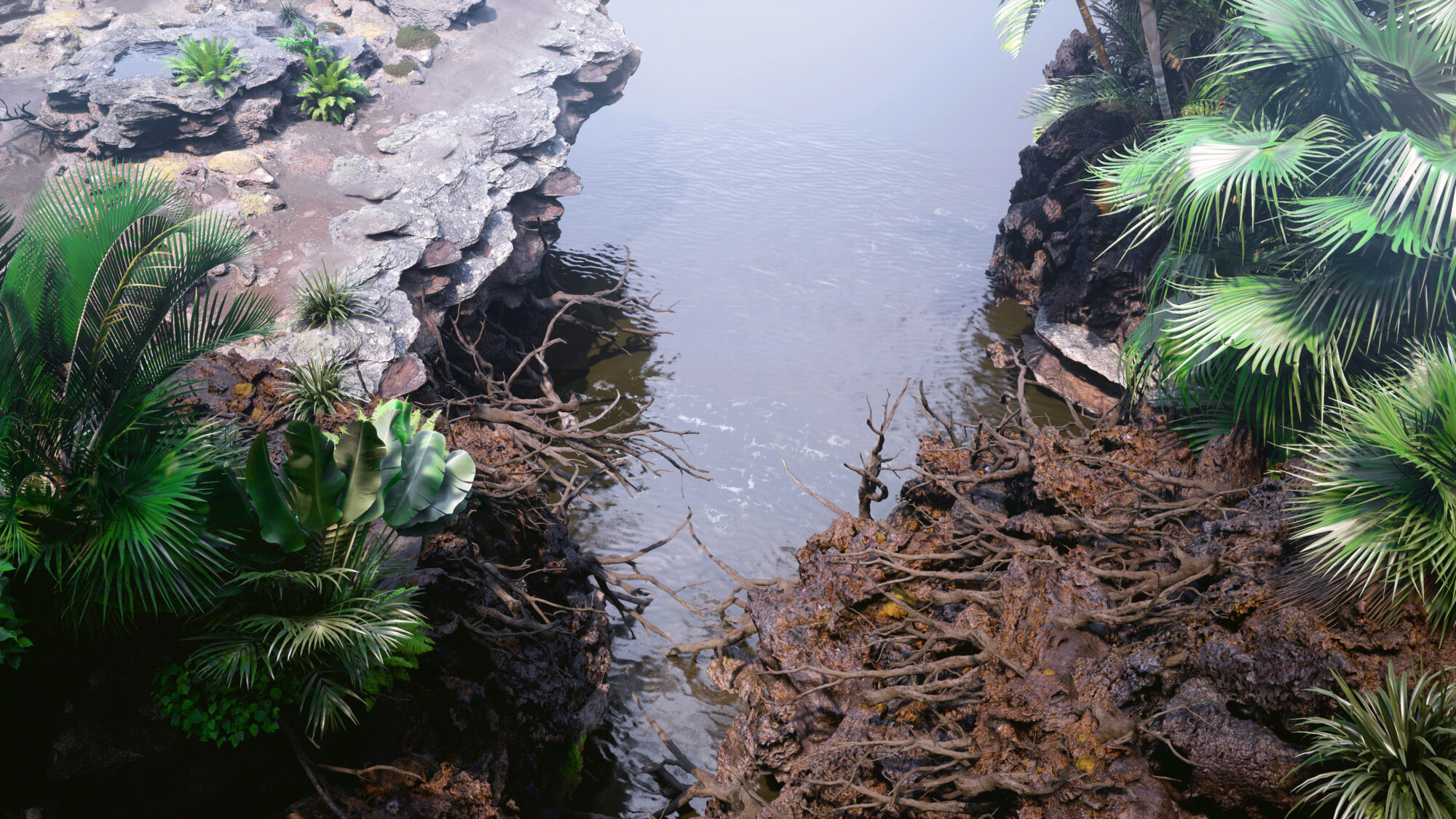
General Tips & Techniques for Realtime Scenes
For some general advice when working on realistic scenes in real-time which I hope that this information might be valuable for you.
So, before going too crazy with putting tons of assets into your scene, make sure to become more familiar with the engine itself. Assets and materials often behave, react and respond uniquely to different Game Engines, especially when interacting with different lighting setups.
I strongly recommend studying the individual features of an engine before starting with asset production right away and identifying and distinguishing between bad quality assets and good ones.
A reasonable and very useful step is to learn from existing scenes of higher quality that were made for the engine of your choice.

Most of the popular engines out there, like Unreal or Unity, provide tons of free or affordable tutorial scenes in their market places, so checking these out in order to have a closer look about how they work and how all elements of those scenes behave, is a very efficient way to get a feeling and to achieve various effects and looks.
Last but not least, photo or movie references also help quite a lot on the way to achieving a realistic look.
Once you have been able to create a charming mood for your environment, just try to convert this gathered knowledge to your future scenes, even though this might not always work out, of course.
Also, try to keep an eye on your pace and don’t start dressing with too many unoptimized or too different assets.
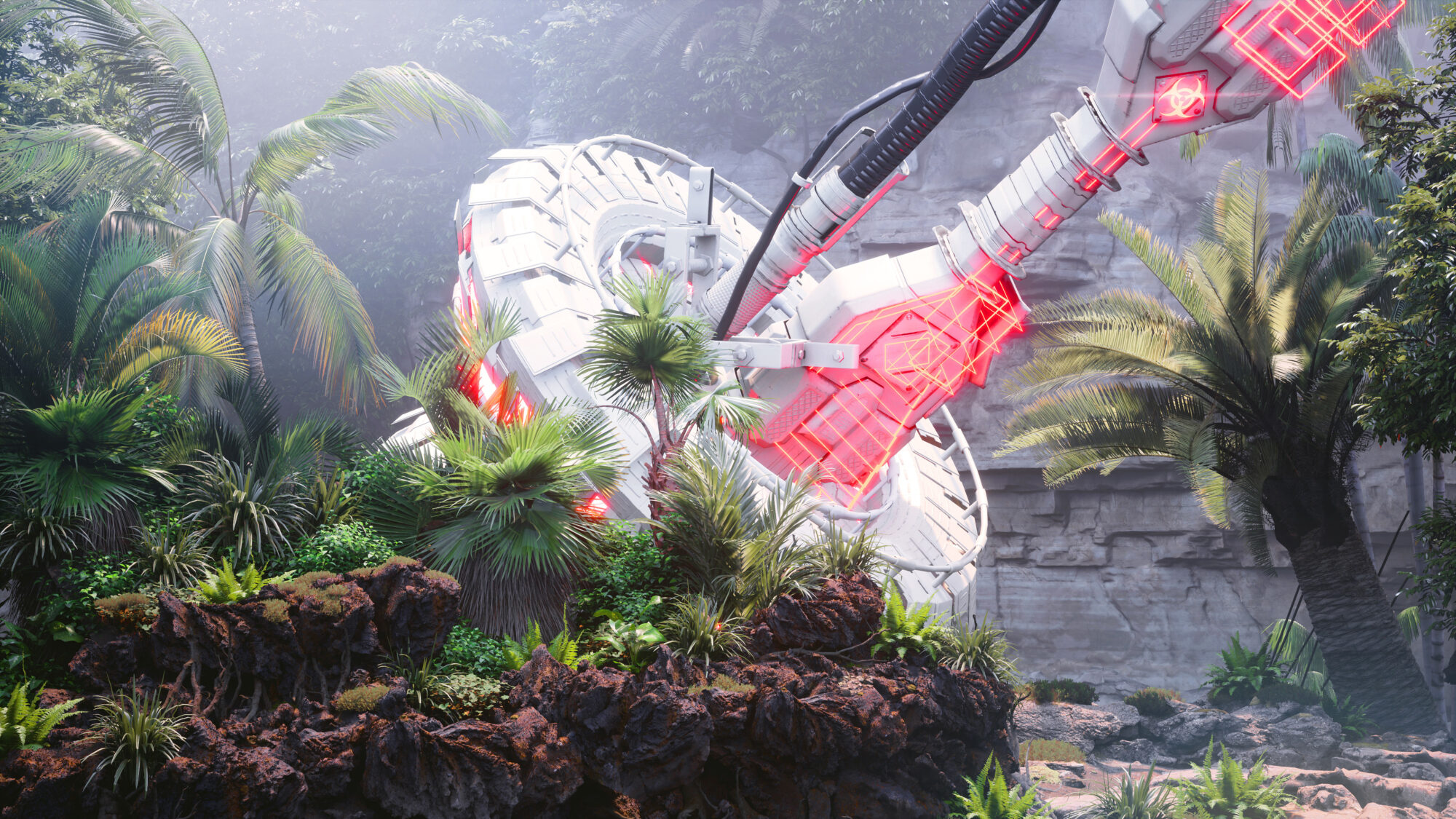
Slow and easy is always better than stressing yourself. Just slowly populate your scene with assets and take your time to reflect or rethink and check if you’re still satisfied with the overall look.
In addition to assets, materials, textures and lighting, scene composition is another important element when it comes to realistic-looking environments, but don’t overstrain yourself by trying to copy the good old masters of composition up to perfection.
At the end of the day, you should have fun working on your scene. Your perception and intuition for composition will evolve over time, so it’s normal if you struggle there as a beginner or 3d environment art starter. Just don’t get upset about this.

I sincerely hope that this insight was at least a bit helpful and interesting for you, so thanks a lot for reading and all the best with your creative projects.
And now, go and craft some impressive stuff!
Cheers!
Please check out my other work here:


